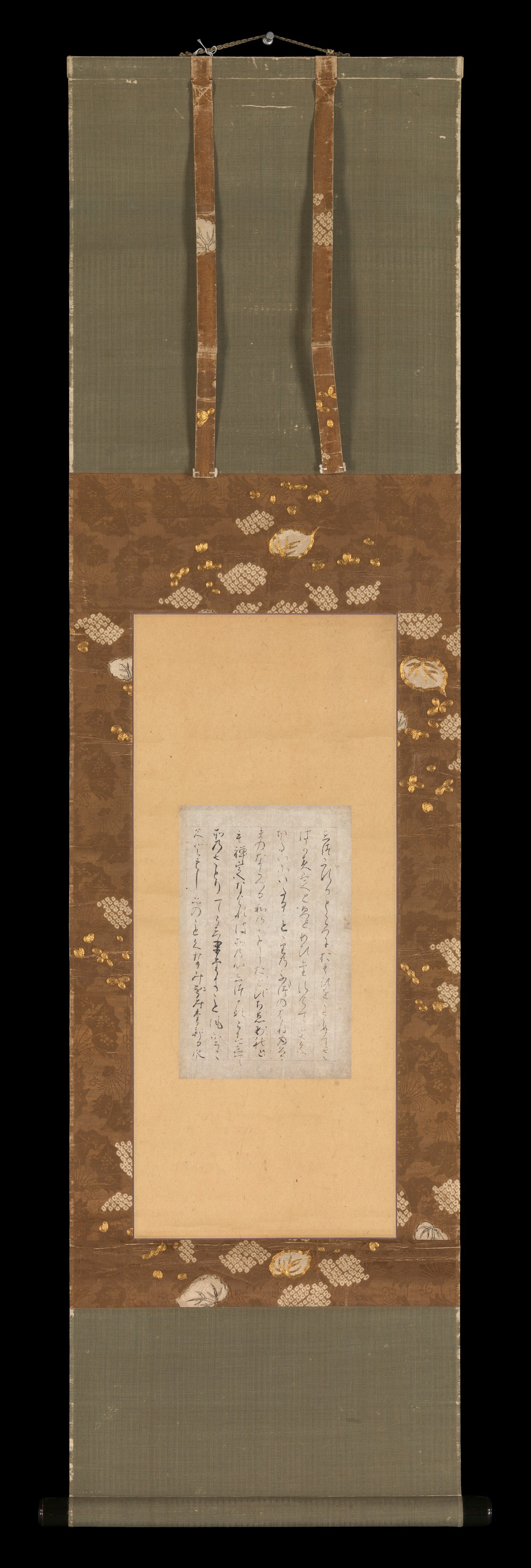Page from Illustrations and Explanations of the Three Jewels (Sanbō e-kotoba), one of the “Tōdaiji Fragments” (Tōdaiji-gire)
Calligraphy attributed to Minamoto no Toshiyori Japanese
Not on view
Illustrations and Explanations of the Three Jewels was originally compiled in 984 by the courtier-poet Minamoto no Tamenori as an introductory guide to Buddhism. The “Three Jewels” of Buddhism comprise the Buddha, the Teachings, and the Clergy, and the book was correspondingly created in three volumes. It was commissioned for the imperial princess Sonshi Naishinnō, who had recently taken vows as a Buddhist nun.
Since it was compiled specifically for a young woman, Tamenori wrote it in vernacular Japanese (using mostly kana, the Japanese syllabary) and had illustrations commissioned, which are now long lost. Inscribed on deluxe mica-printed decorated paper, the calligraphy shows how kana can be elegantly melded in flowing columns in the so-called wayō, or Japanese-style, calligraphy.
This image cannot be enlarged, viewed at full screen, or downloaded.
This artwork is meant to be viewed from right to left. Scroll left to view more.



